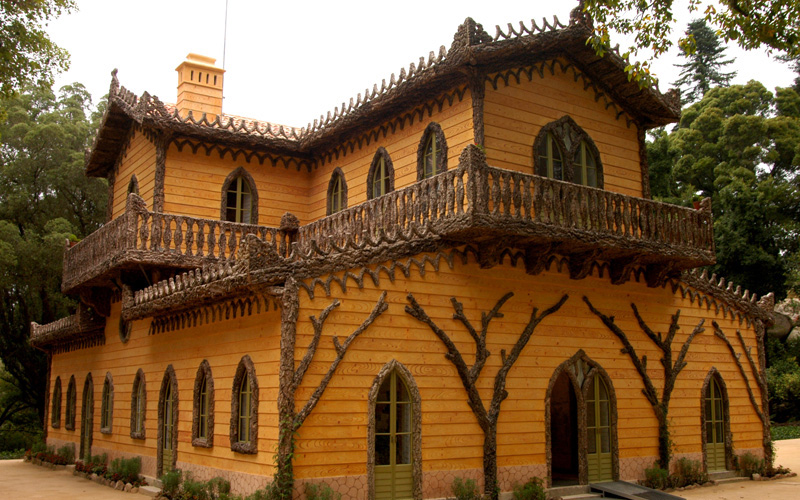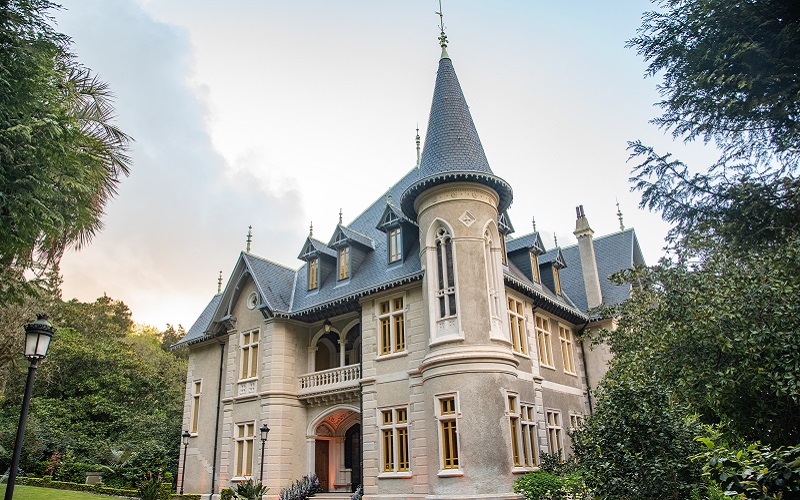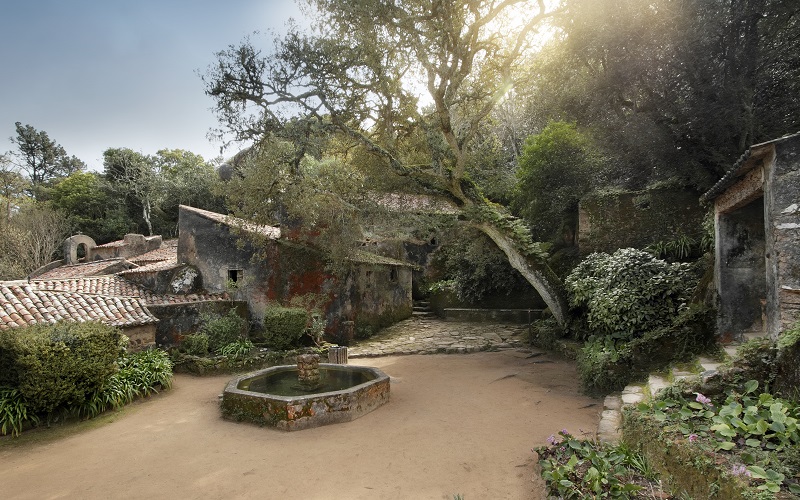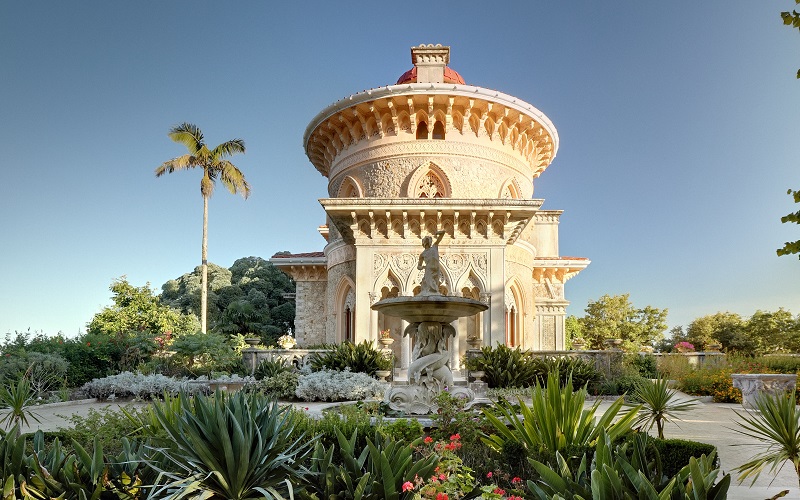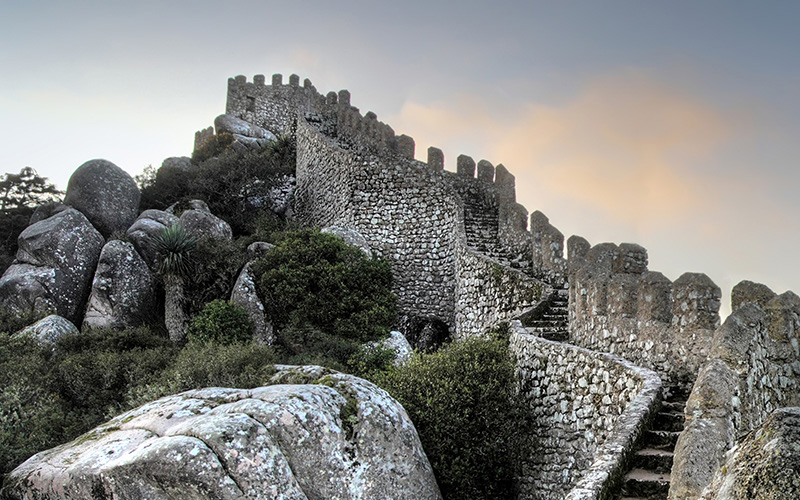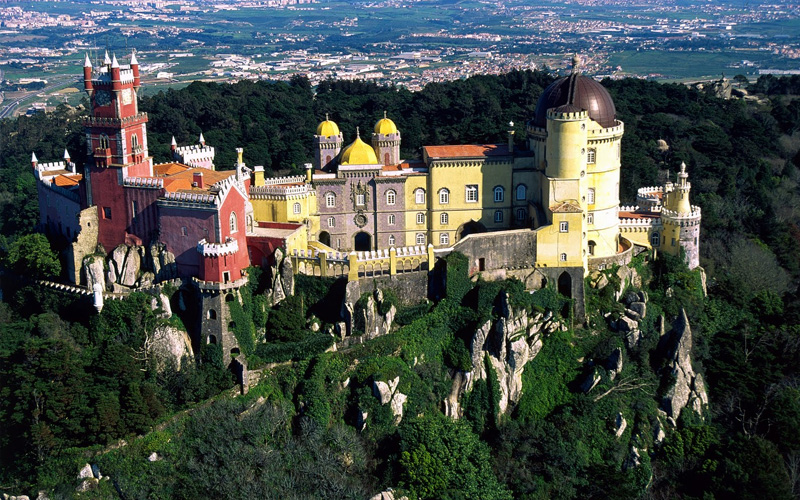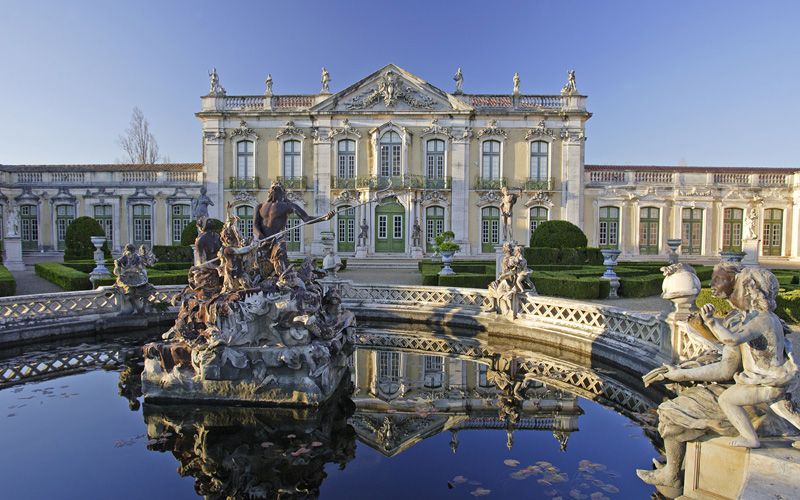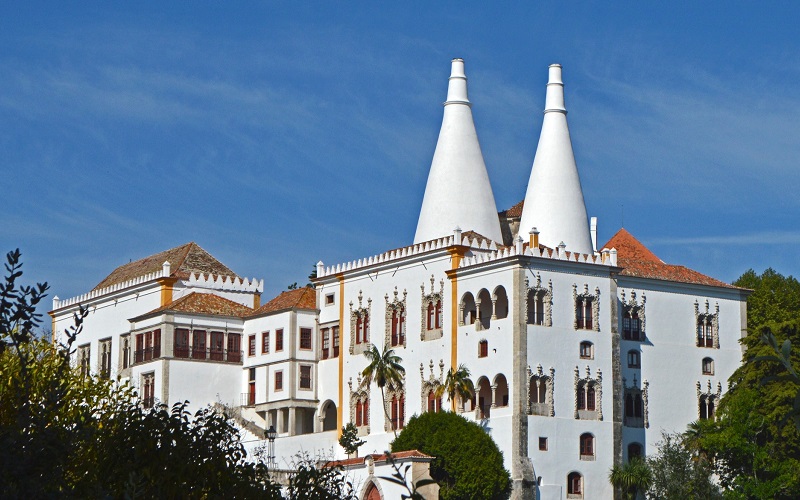The Countess of Edla Chalet was built by King Fernando II and his second wife, Elise Hensler, Countess of Edla, between 1864 and 1869, modelled after the Alpine Chalets in vogue across Europe at the time.
Located in the heart of Sintra, Biester Palace opened to the public in 2022, after some restoration works.
The Capuchos Convent is one of many examples of 16th century Pietistic religiosity in Portugal, and became known for its minimalist construction.
The palace was designed by architects Thomas James Knowles (father and son) and built in 1858, by order of Sir Francis Cook, Viscount of Monserrate. The construction of the gardens exploited the Mountain's microclimate to create a magnificent park, where over 3 000 exotic species can still be seen today.
The Moorish Castle is a privileged viewpoint to admire the view extending from Sintra to the ocean. Winding across two ridges on the Sintra Mountains, the castle dates back to the early days of Moorish occupation in the Iberian peninsula, in the 8th century.
The National Palace of Pena is one of the best expressions of 19th century Romanticism in the world, standing on a craggy outcrop, the second highest point on the Sintra Mountains (exceeded only by Cruz Alta [High Cross] at 528 m above sea level).
The Royal Palace of Queluz, also known as National Palace of Queluz, dates to the 18th century. The palace was built as a summer retreat for Don Pedro de Bragança, future King Pedro III, and was one of the last large Rococo style buildings erected in Europe.
The Sintra National Palace, also known as the Town Palace, was among the palaces used by the Portuguese Royal Family almost up to the end of the Monarchy, in 1910.



